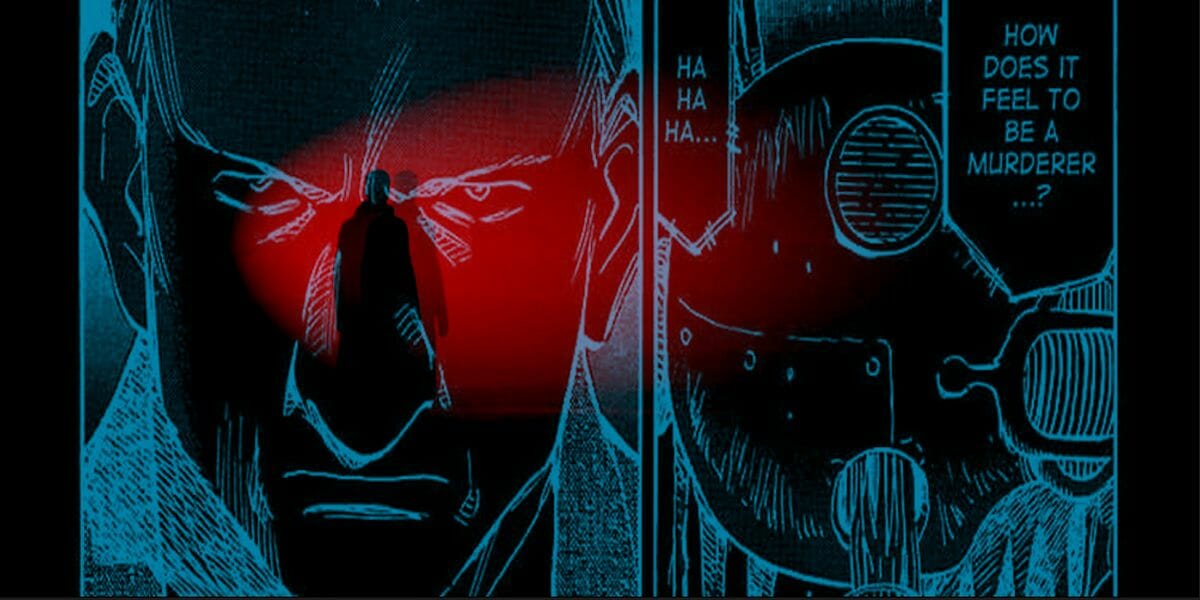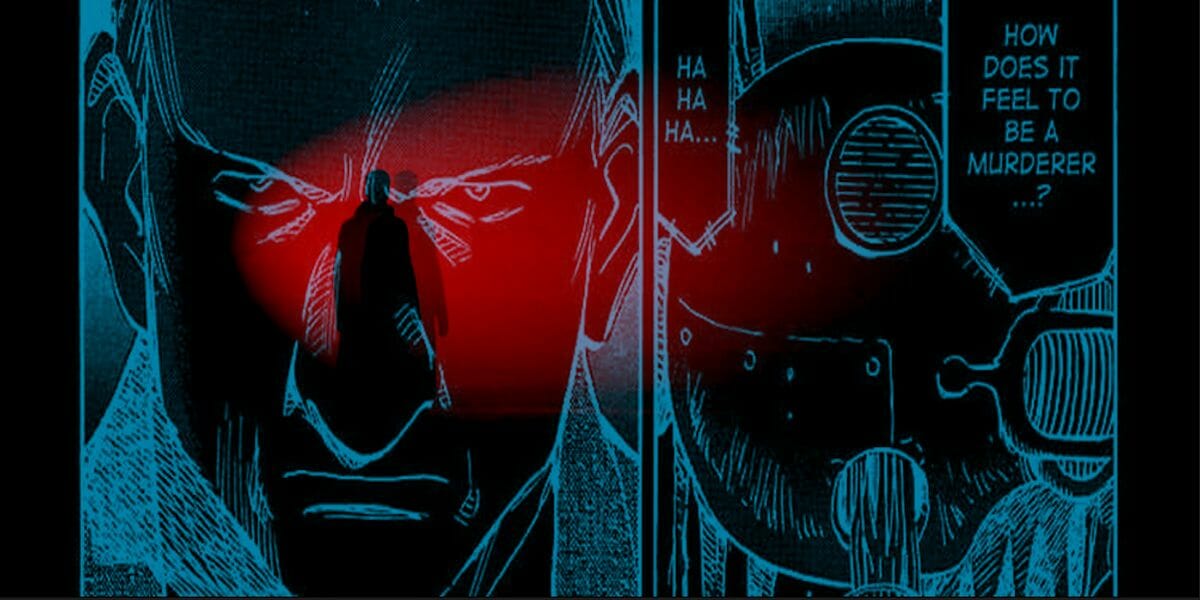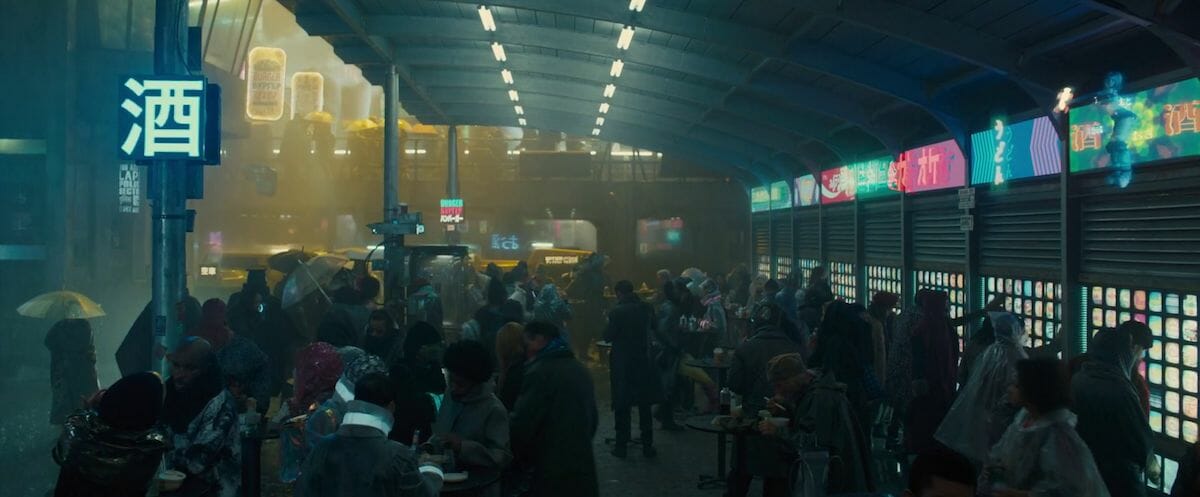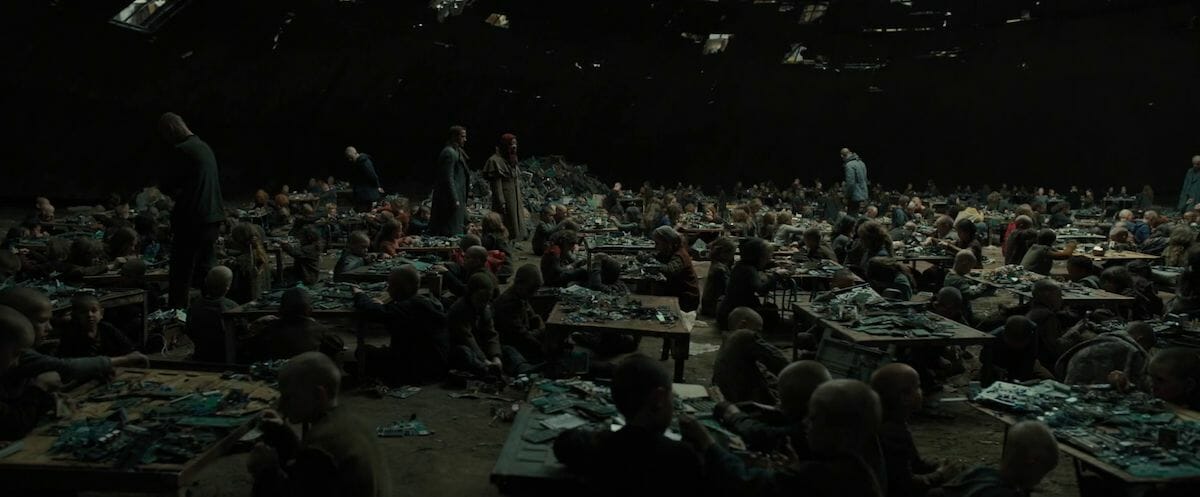Blade Runner 2049 —released in 2017, 35 years after Ridley Scott’s original Blade Runner — is a haunted film; the audience is watching an echo of something.
The opening sequence of the movie is a good example of this; Ryan Gosling’s Officer K sits in the dark, waiting to kill a gigantic elderly soldier replicant (the movie’s name for robots) in an isolated farmhouse deep in the California desert while a pot on the stove boils over. This scene was originally written for Scott’s film more than three decades earlier, a fact familiar to anyone obsessive enough to buy the four disc box set of the 1982 classic.
Blade Runner, the first film to have an officially released “director’s cut”, has been poured over for decades, whether it be strip-mined for music videos, referenced in anime, inspired first wave of cyberpunk or the architecture of modern Shanghai. Blade Runner 2049 was the first official attempt to follow up on Scott’s original in narrative terms— ignoring a trilogy of novels by K.W. Jeter released in the late 1990s which bear the title but more closely act as follow-ups to Philip K. Dick’s original Do Androids Dream of Electric Sheep prose novel that inspired the movie. It might, however, function more as a flawed response to the original that struggles to understand what made that movie so successful.
The Los Angeles of Blade Runner, as envisioned by Scott, is an endlessly cosmopolitan city. Dick’s source novel foresaw the Earth as irradiated, with few people living in San Francisco as it rots and most of the population already living off-world. (Blade Runner follows through on this idea with mention of “off-world colonies,” although they’re never actually shown on-screen in either movie.) Denis Villeneuve’s conception of the Blade Runner 2049 future, however, is more sparse in comparison; his cities are more cavernous and the skies blotted out, even away from the city — a world without sunlight.
Denis Villeneuve, in making what was likely a logistic and financial decision, shot the majority of the film in Hungary and Germany. This means that everything looks perfect for the world they were creating; it also means most, if not all of the extras, as well as the main cast, are white. One of the more subtle indicators of the state of the off-world colonies in these films is the abandonment of the poor, the sick, and disabled on Earth. This was the heart of Dick’s novel, where people regularly had to be tested to see if they had genetic mutations from radiation.
The replicants in the first Blade Runner are all white. The overwhelming mass of extras in the first film are an ethnic and cultural polyglot, where all natural life has died but mankind continues to nest —and Rachel and Deckard’s existence as white people without health problems or deformity is a silent indicator that they’re not human. The whiteness of Villeneuve’s onscreen world undercuts nearly all the first film’s subtlety; it is, in comparison, an embarrassment.
One of the old criticisms of the post-apocalyptic, cyberpunk aesthetic that Blade Runner helped create is that it transplants third world realities to first world countries to act as tourism rather than prediction. In reality, it is both; Wallace, 2049’s corporate villain, is meant to be a stand in for our current billionaire overlords, and specifically invokes Elon Musk and Bill Gates. The protein farming and the nickel mining sweatshop shown in the movie are things happening right now to make these men money. Capitalism being inherently fascist has been part of the genre for so long that people see it as cliche rather than part of the genre’s core structure.
Like all of Villeneuve’s work, the film is a triumph of execution over content which almost always fails to live up to his strength: creating rich, metaphorical images for stories that rarely amount to much. A good example of this is Villeneuve’s Prisoners, where a shot of Jake Gyllenhaal opening storage locker after storage locker trying to find a kidnapped girl only to find venomous snakes and bloody children’s clothing has no narrative that rises to meet that nightmarish moment. Similarly, 2049 is so confident in it’s cinematic strength that the aesthetic alone saves very weak ideas, and hammers home strong ones.
What truly sticks from this movie are the cinematic elements — the orange haze of Vegas, the gargantuan nude hologram, the door in the forest, the waves crashing on the pacific sea wall lit only by headlights, even snow in Los Angeles. Cinematographer Roger Deakins does the best work of his career in Blade Runner 2049, while composers Hans Zimmer and Benjamin Wallfisch deliver a transcendent score — one which rises to the bar set by Vangelis’ original and is perhaps the only aspect of this late reboot with arms long enough to contend with God.
Villeneuve’s visual forbearers are the Coen Brothers, with whom Deakins shot 12 movies, and David Lynch, who prize specificity and focus on an image that’s layered with meaning and irony, as opposed to Ridley Scott’s obsessively-crafted vast worlds that center his characters emotionally in an otherwise very tactile reality. Villeneuve was the correct choice for a second Blade Runner in little ways, proving how shallow the aesthetic is by falling short every time he reaches for profundity. After all, Blade Runner is as much about how people look as much as it’s about a story.
A similar attempt at the most artistic version of a reboot of a mainstream science fiction was Naoki Urasawa’s Pluto. Most often associated in the U.S. with his massively dense serial killer cat-and-mouse epic Monster, Naoki Urasawa and his work are easily summed up as “comedic humanist masquerading as a hard-boiled crime novelist,” as if Preston Sturges adapted James Ellroy’s American Tabloid over and over again. Pluto was his retelling of a 1964 Astro Boy story by Osamu Tezuka. Serialized for 6 years between 2003 and 2009, it proves to be very much a series of it’s time; flush with ‘00s anxieties like war in Iraq, weapons of mass destruction, assassination, islamophobia and serial killers.
Gesicht, the hero of Pluto, is one of the most powerful cyborgs on earth put into a service job as a detective. A large portion of Urasawa’s focus is about Gesicht’s discovery that his memories had been artificially manipulated to cover up his shooting of a human. The relationship between the robot who hunts his own to his kind is presented almost identically to Blade Runner 2049. Gesicht and 2049‘s Officer K both flex against their programming in ways that present as mental disturbance beneath a placid exterior. Gosling’s chosen flatness for the role– very strong and expressive, but charged — explodes not when he’s beating a man to death and carving out his eyeball, but when he’s showing weakness and cowardice.
In comparison, Urasawa’s art in Pluto is so full of expression and gesture that the absence of visible emotion in his Gesicht (which translates from German to “face”) is a pointed decision — lack of expression in this story of robots is always coded as sinister, with the two villains Brau 1589 (a robot capable of murder who cannot move, coded as a Hannibal Lecter figure) and Dr. Roosevelt (an American supercomputer that speaks through a personified teddy bear), having no expression whatsoever.
Both 2049 and Pluto have similar re-centerings of the story however, where the hero of the original incarnations of each property is updated from a beloved charismatic lead to a white, robot detective tasked with hunting and killing his own, with that detective married to a woman — or a simulacrum of a woman — who struggles to have emotions against her unsophisticated programming. The detective, in both cases, has an unsettling streak of rage.
The power chord of the emotional center for both K and Geischt is, ultimately, one of disquiet — in particular, the way they relate to their artificial wives; wanting to please them, wanting to evolve them through stimulus. In 2049, Joi (Anna de Armas) is a product to be upgraded in K’s desultory existence; she shows emotion and concern, but it’s unclear how much of that is just programming. In Pluto, Gesicht’s wife Helena’s inability to understand quite why she feels wrong, or quite if she is experiencing loss, is played for tragedy; the lack is what’s on display. Both characters display an anxiety of self hatred in both leads — they cannot improve their station because their brains are not built to do that, instead projecting onto the woman they love.
The core relationships of both K and Geischt are not the dark, demanding attraction of Deckard and Rachel from Scott’s first Blade Runner; they’re something sadder. 2049’s Mariette, the replicant prostitute who has a menage a trois with K and his hologram wife Joi, says to K in one scene, “Oh, I see. You don’t like real girls“. It’s a line that gets under K’s skin in a way that implies a kind of shame of self rarely portrayed on film.
Gesicht shows rage maybe two times throughout the eight volumes of Pluto, and it’s used as a cliffhanger element to show him as a destabilized figure on both occasions. Gesicht loses it entirely when he kills the man who murdered his (artificial) son, and it’s portrayed as the kind of “Great Man Snaps” moment in western media, not unlike Richard Gere’s break in Unfaithful. The radiating childishness of Gosling’s freakout is shown all the more honest in comparison.
Both Pluto and Blade Runner 2049 are remix, reboot culture — the kind of art made by people who’s only option to exercise their creativity at their preferred scale is to take the corporate offer. They’re done about as well as possible, but the main problem is that any late period sequel has a stink of fan fiction that never quite goes away. Pluto at least elevates the material, despite that word beginning to lose it’s meaning in pop culture. 2049, on the other hand, is a stronger story of traditional Hollywood character arcs, but is ultimately less intricate than the original; the most effective scenes are remixes of the original: Luv’s blithe drone bombing is an inversion of Deckard saying “enhance”, the assaultive baseline test is the Voight Kampff test for too much empathy, rather than a lack of it.
Pluto ends up a Promethean effort, in that it tries to not only match a primary source of the genre, but also outdo it, and update it. It succeeds in what could be considered ultimately empty goals; there is always the sense that updating a children’s story for adults is perverse, especially in the Christopher Nolan/Mark Millar mode of over-serious revisionism that Urasawa’s approach resembles.
2049 has similarly high ambitions, and frequently attains them. It’s not quite as good as it thinks it is, however, which may be indicative of our era. The allusions the film makes are always to places higher than even Blade Runner itself — it has structural references to Chinatown and Apocalypse Now, especially Deckard’s late onscreen arrival. K is named after the doomed collaborator in Kafka’s The Castle, and his baseline test includes reciting the poem from Nabakov’s Pale Fire. Niander Wallace, a character written for David Bowie, is visually associated with Peter and the Wolf. This is overcompensating, but it’s in the spirit of the original — Roy Batty quotes William Blake’s “America A Prophecy”, and JF Sebastian’s apartment is designed after David Lean’s Great Expectations. (Ridley Scott is certainly not infallible, but he has better taste, perhaps.)
The last 20 minutes of 2049 are excellent, devastating filmmaking — and smaller than the movie implies. It is, instead, a very human catastrophe. After the portentous discussion of God and pain from the tech billionaire slaver Wallace, we watch a bloodied K, fresh from finding out he’s not the replicant messiah that he believed himself to be — as did the viewer, and Wallace —and watching his wife die, as he sees a towering naked hologram looking like his dead wife, a commercially available product. He listens as it uses some of the same phrases he thought were unique to their relationship. It’s emasculation as revelation, something that this movie has been confused about up until this moment. We see a sickness come across K’s face. He decides what his life is worth to him. It’s not what he thought. But then again what is?














































